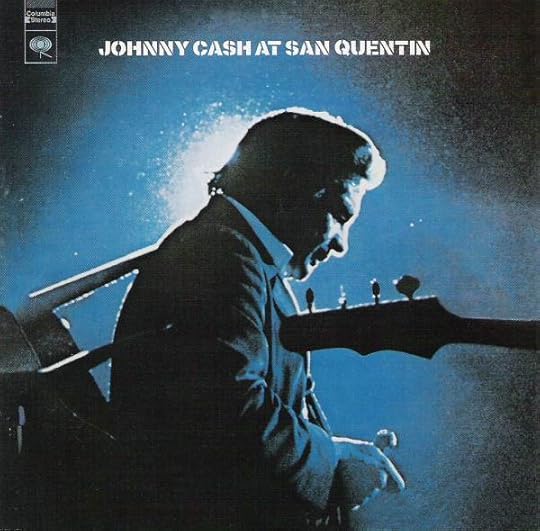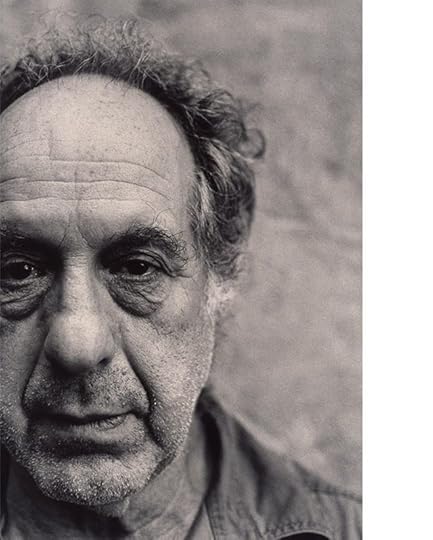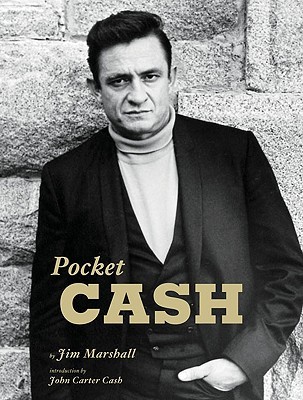Marc Silber's Blog, page 11
September 12, 2019
Jim Marshall’s Unseen Photographs of Johnny Cash
Hey, since his album Johnny Cash at San Quentin recently had it’s 50th anniversary we thought we’d re-publish this article:
Jim Marshall and Johnny Cash weren’t just artists — they were also close friends. After meeting in 1962, Marshall shot five album covers for the alt-country legend and together they created some of the most iconic images in rock ‘n’ roll photography.
Marshall, who died in March last year at the age of 74, also amassed over the years a collection of unseen photographs of Cash which have now been collected in the book “Pocket Cash.” Fittingly, it was one of the very last projects Marshall ever worked on, as he approved the final series just days before he died.
Included in the book are 110 photographs of Cash, which include the legendary picture of him flipping the bird just before performing at San Quentin Prison (you can read about the story behind the shot here).
Marshall’s new book also features an introduction by John Carter Cash, the only son of Johnny and June Carter Cash, as well as personal recollections by actors Billy Bob Thornton and Kris Kristofferson.
An exhibition of Marshall’s Cash collection, featuring 20 prints of the iconic images printed during the photographers lifetime (many of them never seen by the public), are currently being shown at the Morrison Hotel Gallery in New York City.
The post Jim Marshall’s Unseen Photographs of Johnny Cash appeared first on Advancing Your Photography.

September 11, 2019
A Day to Remember: Peter Lindbergh
Today is a day to remember those who have been lost. Today we’d like to remember fashion photographer Peter Lindbergh who passed away last week.
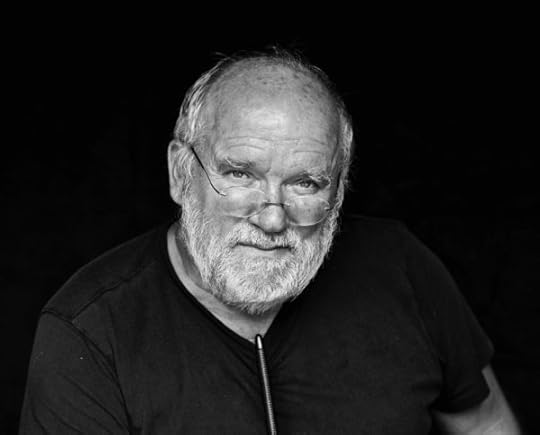
via Nevada Sagebrush
Lindbergh discovered his love for photography while taking shots of his brother’s children. After he discovered his passion, he attended the Berlin Academy of Fine Arts. This is what lead to Lindbergh opening his own studio in 1973 and taking a job with Vogue in 1978. According to the Nevada Sagebrush, starting a job at Vogue kickstarted his remarkable journey.
He defined the decade in 1990 with his shots of Linda Evangelista, Naomi Campbell, Tatjana Patitz, and Cindy Crawford. It has been stated that Lindbergh really began to come up in the fashion world the year by “strutting in different colored dresses and lip- synching to Michael’s soulful voice,” according to Nevada Sagebrush. That became a key moment in his career and a part of what makes Lindbergh so influential.
CNN reiterated a quote by Peter Lindbergh:
“When you look in the magazines, the women have no experiences or any marks of a past or of anything…and they are totally wiped out and washed out and I think that’s insane,” he said. “That dream of perfection and that dream of forever young is a ridiculous thought.”
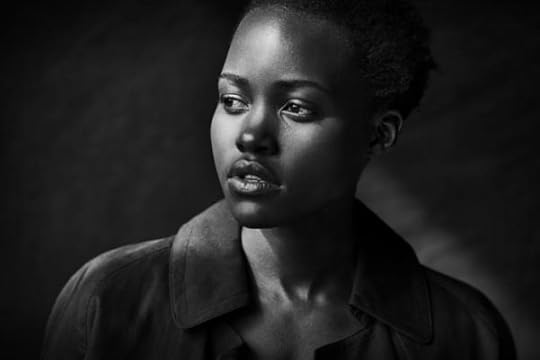
via CNN
Thank you
Being a young woman and knowing that there’s a photographer who believed that any “imperfection” shouldn’t be washed out, that means a lot. Young women are told all the time that what we to do to make ourselves more beautiful. We often hear how to adapt to certain methods to fix our imperfections. Lindbergh was the photographer who snap shots of beautiful strong women like Cindy Crawford, Lupita Nyong’o and Emma Watson. The fact that he believed that perfection is a dream gives me a sense of confidence in myself.
The photography world has taken two sad loses these past two weeks, Peter Lindbergh and Robert Frank. Two wonderful and influential photographers who made a difference in this field of art.
Rest in Peace, Peter Lindbergh. Thank you for your inspiration and beautiful work.
The post A Day to Remember: Peter Lindbergh appeared first on Advancing Your Photography.

September 10, 2019
Photography Community mourns Robert Frank
Today, September 10th of 2019, the photography community mourns an influential documentary photographer. Robert Frank passed away this morning at age 94.
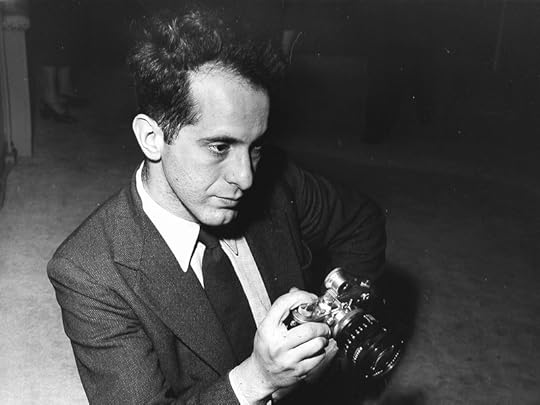
Photo via NPR
He was most known for his book The Americans. His book contains of black and white photographs taken along a road trip he made in the 1950s. These photos are known for not being the cookie- cutter excess and family fun that’s typically associated with the 50s. Instead, these photos are dark, grainy and free from sentimentality, according to Andrew Limbong of NPR.
“I was tired of romanticism,” Frank said of The Americans, “I wanted to present what I saw, pure and simple,” as quoted by The Guardian. This approach is part of what made Frank such an inspiration to future artists; it was pure and true. He wasn’t afraid to show the world the “ugliness” of the streets.
As stated by the New Yorker, by embracing Robert Frank’s work, people could gain a sense of ambiguity. You’d be able to see the beauty in everything; good or bad. Even nowadays, that’s not an easy lesson to teach.
Frank’s revealing and eye-opening approach of capturing life in American in the 1950s ” inspired generations of photographers, writers, filmmakers and musicians,” according to the Washington Post. People were inspired to be open- minded and unafraid to show the real world no matter what it entailed.
I sincerely hope that Robert Frank’s work will live on and continue to inspire artists everywhere.
Rest in Paradise, Robert Frank. Thank you for your beautiful work.
via PetaPixel
The post Photography Community mourns Robert Frank appeared first on Advancing Your Photography.

Johnny Cash Photographer Reveals Story Behind Middle Finger Photo
Hey, since his album Johnny Cash at San Quentin recently had it’s 50th anniversary we thought we’d re-publish this article:
*DISCLAIMER: the image below contains vulgarity that may not be suitable for everyone, but if this disclaimer offends you, well dang us for bein’ soft on you
August 27, 2019
Steps to Take for Your Creativity
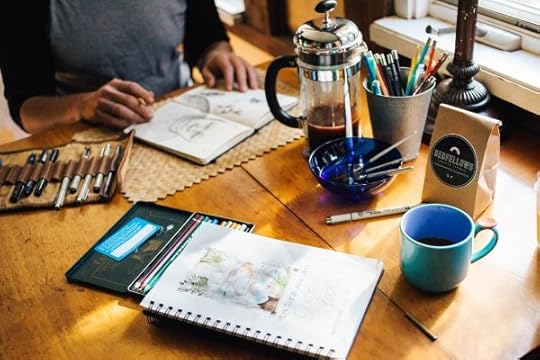
Photo by Rachael Gorjestari
Just this past Wednesday, August 22nd, I had the fortune of attending a talk by Marc Silber about his new book Create. His presentation was very eye opening to what will aid people in lighting that creative fire within themselves.
Being a writer myself, my creativity is very important to me, it is a huge part of me. Upon hearing this applicable advice from Marc himself but advice he shared from some of those whom he interviewed. It was awe inspiring.
The First Step
He introduced the five stages of creativity: Visualization, knowing your tools, work your craft, edit and share. Step one: visualization, is immensely important to the creative process. The level of importance of visualization Silber expressed provided much clarity as to what many struggle with: how can you begin something without visualizing what you want that something to become?
With visualization being such an important aspect to creativity, there is always room to strengthen that skill. Marc Silber told us how to do so: visit museums as often as you can. It doesn’t matter what your creative genre is, something will spark.

Photo by Igor Miske
Think about it: you’re surrounded by paintings, sculptures, and history. Soak it all in and let your creative process lead the way.
How does it make you feel?
What do you see?
How was the subject of the sculpture or painting captured?
Your friend, the Notebook
Hand in hand with visualization is always carry a notebook. As creative people, we have no idea when an idea will pop into our heads. We don’t want to lose that.

Photo by Calum MacAulay
“Keep a notebook. Travel with it, eat with it, sleep with it. Slap into it every stray thought that flutters into your brain.” – Jack London
You could be doing an everyday task when all of the sudden a wonderful idea will pop into your head and with a notebook nearby you can write it down before you forget. Don’t let your wonderful ideas slip away from you. My favorite thing Marc said about having a physical notebook is that it isn’t digital. This notebook isn’t something that will crash or freeze or erase all of your work. People can be so enticed with having the best form of technology to hold all their notes that it is easy to overlook the simple beauty of a physical notebook. Marc stated that with this notebook you can also look back and learn from yourself; build from the notes you took.
Know Your tools
Speaking of notes, make a note of this: know your tools. At first, I didn’t quite understand but Marc explained very well, both at the talk and in his book. He explained that understanding every nook and cranny of your tool(s) will allow you to fully express your creativity. Sometimes people want the newest and greatest tool but don’t understand the tool very well. They spend so much time adjusting and fiddling with their tool that very little time is put into the art itself. Your art is a beautiful part of you and it deserves your complete focus. Don’t let a lack of knowledge and understanding of your tool stop your creativity. You may get so wrapped up in all these cool tools to use with your art that you end up not creating anything, according to Silber.
“You have your vision, you have your tools, it’s time to get to work. It’s that simple.” – Marc Silber
First Creative Barrier
Silber referred to one of the creators he interviewed for his book, composer David Campbell to introduce the topic of barriers for creators and how to overcome them. As a very successful composer with 425 platinum or gold albums taht he has been a part of, it’s amazing to think he had any doubts or barriers. According to Silber, it is common for people to believe that when someone is that good or as successful as Campbell, they must have been prodigies or have been successful in this area since they were young. The truth is, everyone has barriers to overcome within themselves for their creativity. To give us an idea of the advice we’d read about in Create, Marc told us what Campbell said is one of the biggest barriers a creator faces: self- criticism.
There is a right time and a right place for self-criticism. You don’t want to start self-criticizing right when you’re coming up with ideas because that’s definitely not the right time. Even when you’re in the middle of a project and you start to have those invading thoughts of, “oh I don’t like how this looks,” don’t stop just yet. Keep going and finish the piece before deciding.

Photo by Jade Stephens
Step in the Right Direction
As a writer, I am always questioning whether or not what I am writing is good enough. It is for that reason, I have never actually finished a chapter. My own self- criticism has stopped me from expressing my creativity. I learned that during this talk as well as when I read Create.
I could go on and on about how much this talk and about Create helped me move forward with my creativity. It is still a daily struggle to have that self-confidence in my writing. However, I now have advice from professional creators on how to approach my self-doubt. And that’s just the first step.
All of this is just the tip of the iceberg of the insightful and helpful advice gained by Marc Silber and his book Create. Gain your self- confidence, learn how to perfect your visualization, make time for what you love, find your support system and share your work with the world.
It is not an easy path but it will be worth it.
Be sure to check out his book, Create: Tools from Seriously Talented People to Unleash Your Creative Life.Learn more here.
Want to Jumpstart your Creativity?
I’ve created a quick start guide for creativity that will give you easy steps to live a more creative life.
Get the Quick Start Guide here!
The post Steps to Take for Your Creativity appeared first on Advancing Your Photography.

August 22, 2019
Delivering the Goods
I always tell workshop students that as much as I dislike getting up early, I rarely regret being out at dawn. Today was one of those exceptions. I was up at 4:30 this morning to get out into Napa Valley for sunrise. It was absolutely fogged in at home, thick clouds. I was hoping it was going to burn off and it didn’t. I waited around for over three hours. By the time the sun had started to come through a little bit, the quality of light was awful, and I just had to bag it. It was a complete waste of time.
A Dream Assignment
When I got this assignment, it was the absolute dream assignment. A major winery in Napa is rebuilding much of its tasting facility and they needed nine enormous prints for the nine new tasting rooms they’re building. One print from each of their main vineyards. And it’s an absolute dream. it’s the kind of thing I love doing. The problem turned out to be, three of the vineyards were spectacular. They are built in the mountains at the side of Napa Valley, while the others were on the floor of the valley. Absolutely flat, featureless, nothing of interest. And it’s been very problematic.
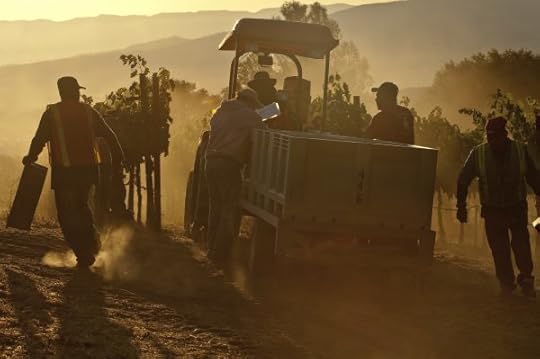
Photo by Bob Holmes
We tend to think that photography is just about taking good photographs, but the most important thing about most photography is the content of those photographs. It’s not enough just to take beautiful photographs. That’s very much a part of what I do. But the other element is showing photographs that have content and can show something that the client wants to illustrate. In this case, in the wine industry, vineyards should reflect what’s known as terroir. This is a combination of geography, weather, and a bunch of other things that make up the characteristics of that vineyard site. And the idea was to show these nine very different vineyards, and showing their different, terroir. In reality, five of them looked almost identical physically and it’s been very difficult to differentiate them. I’ve been hoping to work in good light.
The Problem
The weather’s been very problematic, particularly this time of year. When it’s hot in the Central Valley of California, the rising heat pulls in fog from the coast, which affects all the coastal counties. Sonoma County, Napa County, it’s what makes it great for wine growing. You get great diurnal temperatures, very cold evenings but very warm days. Which is perfect for most grape varieties, but it makes it very difficult to shoot photographs. We want that nice warm dawn light and I’m just not getting it at the moment.

Image by Bob Holmes
I planned to go out on this last weekend. I was just about to set off, and I googled the traffic. Then I saw there was a race meeting at the Sonoma raceway, which is right on the route to Napa for me. This meant all the roads were completely solid with traffic. It was an absolute nightmare. So that wrote the weekend off. So I went this morning, and as I said, the weather was totally inappropriate. That’s the way it goes, and I’ll keep trying and plugging away.
Producing the Goods
When I was working for national geographic regularly in the 1980s, you always felt a tremendous responsibility and that your job was on the line. I would go to Asia for three or four months with 300 or 400 rolls of film with minimal contact with Washington. And you had to come back with the goods. The legendary director of photography Bob Gilker used to say, “I want photographs, not excuses.”

Photo by Bob Holmes
And it’s the same for any client. You have to produce the goods. If you’re being paid a fair professional day rate, the onus is upon you to produce. And you just keep plugging away until you get it. Sometimes it’s harder than others, but you always have to come through and I’ll keep plugging away this job and hopefully I’ll keep working.
Be sure to keep up to date with all of our content by checking out the blog and subscribing to the YouTube channel!
The post Delivering the Goods appeared first on Advancing Your Photography.

July 30, 2019
Why Your Photos Suck
I’m Jessica Sterling. I’m a portrait and events photographer based here in Los Angeles, California. Today I want to talk a little bit about why your photos suck, or more correctly some things that some people do in their photos that make them less cool. These are my thoughts as to why.
Photos with Impact
The thing that I try to do when I’m capturing a picture, is try to make it have some impact. Let’s say for instance the person is centered and their head is right in the middle of the frame and there is a ton of stuff on the side and their head is really small. There’s nothing really interesting about anything that’s going on around them. It’s just that the person who’s taking the picture happened to be standing six or 10 feet away from them and picked up the camera and took it at their height.
You know, you see a lot of snapshots like that: family pictures and similar. And to me it’s just the mark of an amateur photographer when something is dead centered but not in a striking, awesome Instagram sort of way. It’s just sort of “oh, I’m going to take a picture of you.” So one thing to do right away is take a couple of steps forward. Maybe put your person you’re photographing slightly off center. If there’s something around them that’s interesting, then it becomes like an environmental portrait.
When I’m doing a composition, I think of diagonal lines. Because diagonal lines have more energy than horizontal lines. It’s like lightning. So I’m always looking for something to add a little bit more to the photo, where the person I’m photographing seems like they’re reaching out. Now even if you’re taking pictures of a cute newborn baby that’s so cute and cuddly, you still want people to see the photo and think, “wow, what a striking child. Incredibly gorgeous baby.” You want to have something of impact. So to me composition is super, super key to making your photos not suck.
What’s the Central Idea?
The other thing is a picture should have some type of central idea that it’s trying to communicate. It doesn’t have to be this long concept, but for example “this is a photograph of Janet”. Not where there are tons of things to look at and none of them are really stand out. Your eye automatically goes to something first when you glance at a photo, it should go to something. And if that something stands out, that’s the thing you want people to look at first. And other things are sort of just distractions. You look at a picture and you think “oh there’s picture people here. And then there’s this weird tree.” The mental process goes from looking from the person to the weird tree. It can kind of be where your eyes start somewhere. It needs to start somewhere.
At the beginning of the story has to start on page one. So like where’s page one? Where’s chapter one on this picture? And then they can travel. You just don’t want to have other things in there that are kind of off topic. Unless that’s part of your story. But when I see a snapshots with people and then there’s some person and back there or some random thing in the back, I try to frame things out that don’t have something to do with the moment. The story that I’m trying to express. I think maybe story sounds too lengthy.
So composition, having an idea. “This is a photo of ___”. So your photos should have all those things. It should have striking composition. It should express a particular Haiku idea, and it should be impactful, and not have a lot of distractions. Everything in the picture should help tell your Haiku.
I hope that’s helpful, please subscribe to our YouTube channel and blog to keep up to date with all our content. Also be sure to leave comments on what you thought about these tips and what you would like to hear more about in the future! And as always, remember to get out there and capture your own images of life.
The post Why Your Photos Suck appeared first on Advancing Your Photography.

July 27, 2019
Travel Photography Tips from Bob Holmes
We’re back with National Geographic photographer, Bob Holmes, and he’s talking about some of the challenges of travel photography.
Travel Photography Today
Travel photography as we know it is a thing of the past. I rarely get assignments to shoot travel. One thing that I always tell workshop students who are interested in moving into the travel arena, is that they should find another interest that they can concentrate on that enables them to travel. I did this several years ago through wine. I love food and wine. They seemed a natural way to go. I live just outside Napa Valley, so it’s very convenient. Wine enables you to travel all over the world. I shot in Australia and New Zealand, South America, all over Europe. Even in places like Myanmar. So it opens a whole world to you and it doesn’t stop you traveling, but it gives you something to hang your travel photographers hot on. So in the last few years I’ve specialized essentially in the wine industry.

Photo by Bob Holmes
And a few months ago, a marketing director for a winery in northern Spain and Ribera del Duero region. We were approached by this guy who was working in Oregon, but he was the marketing director for the Spanish winery and knew my work and my partners work, Andrea Johnson, and invited us to go and shoot the winery for promotion and web use, all kinds of different uses. And we jumped at the opportunity. Obviously it’s always fun to go to another country that you haven’t really shot before. Shooting in a narrow area is always difficult because you find yourself repeating yourself. One winery is very much like another, wherever it is in the world. Landscape varies, but they still grapes in a field, it’s all more of the same.
Photos in Spain

Photo by Bob Holmes
My favorite area is I guess, are some of the landscapes of that part of northern Spain. The village where the winery was, was fascinating. It was a village of 300 houses with a population of 50 people. Perfect village. Absolutely picture perfect. And you could imagine being an arts community. It could be filled with little galleries and artsy stuff, but it’s no one lives there anymore. It’s just 50 people and they nearly all work in the winery or retired. And I found the village as interesting as anything and I make some of my favorite photographs. There are one or two that I really like from the village. We’ll see. I have to live with photographs for some time before I really make a final decision. Now I used to put prints up on my wall. I still do and just live with them. Some I tire over in a matter of days or weeks and others. I’ve got one printed on eight in Egypt that I’ve had up almost since I made the photograph and I never tell her of it is one of my favorite images.
Challenges of Travel Photography
The normal challenges of travel photography, and even more so with wine photography, because a lot of wine photography is landscape photography, it’s all landscape. So the secret of landscape is, as you all know, get up early, stay out late. In Europe, in June, sunrise is at five, sunsets at 10. So you’re always up at four in the morning to get to the location to shoot. You’re out until the sun has gone down, so you get, hopefully, interesting skies. And then in Spain dinner is about 10 o’clock, wherever you are. So you’re having dinner and inevitably accompanied by wine, and go to bed at midnight and get four hours sleep.
Everybody’s a photographer now, which is a good thing. I’m not critical of that. It gets irritating sometimes because people set themselves up as experts with absolutely no experience at all. But generally I think it’s a good thing that everybody’s embracing photography as a hobby. The difference between an amateur photographer and a professional is that if an amateur photographer feels shitty at four in the morning, they roll over and go back to sleep, I can’t do that. I have to get up, however I feel. Whatever sort of mood I’m in. I have to be up and out shooting. And that’s that is a curse, but it’s always worth. It always pays off. That’s the biggest challenge.

Photo by Bob Holmes
The other challenges is finding something new, finding a fresh look. Again, as a professional, we have crutches that we use that enables us to get good, acceptable photographs even in the hardest circumstances. They don’t necessarily make great photographs. They make acceptable photographs. We always come home with the goods.
If you enjoyed this story, be sure to subscribe to our YouTube channel and subscribe to our blog to keep up with all of our content. And as always, be sure to get out and take your own images of life!
The post Travel Photography Tips from Bob Holmes appeared first on Advancing Your Photography.

July 16, 2019
Don’t Freak Out!
Hi, I’m Jessica Sterling, a portrait and event photographer based here in Los Angeles. And today I wanted to talk about self confidence and fear. It is one of the biggest subjects, questions, aspects of your career and life. Here are a couple of thoughts on that:
Terrified = Awesome.
Joss Whedon, the director, said something like how if he’s terrified he knows he’s doing the right thing. As an artist, if you’re trying to break out on your own, fear is something you have to really take a look at and tackle.
It takes a lot of courage to be a freelance artist. Think of it this way: if you’re out there making your own path in life, you’re not working in nine-to-five job. You’re doing something that’s maybe a bit unusual, something where you have to figure it out and direct your own ideas and motion, and you fail or you win.
It’s way scarier than something where somebody already found the way for you. It’s as if you are going through the jungle. You don’t have a compass, and you have a machete… and it’s getting dark out… and you’re hacking away… and there’s all these mosquitoes biting you. It’s more like that than if you were just driving down the freeway, listening to your podcast… relaxing… drinking your latte.
The Annoying Dude
But let’s say you’re trying to do something. And you have a little voice that’s giving you a hard time, and it’s like constantly telling you that you can’t do it, like you’re going to make a mistake or it’s not going to happen. You’re hacking through the jungle and it’s getting dark, and you’re like “I’m doing this man!” And then you have like this really annoying dude who’s hanging out on your back, like piggyback style. And he’s like saying, “it’s getting really dark. I don’t think you’re going to make it. Boy that mountain’s really far away. Do you think these mosquitoes carry malaria? Oh, that machete is really old and the handle is probably going to fall off. Oh, you’re gonna get splinters and maybe ruin your manicure…”
You don’t need that! Get that guy off your back! If you start having doubts and worries, try to channel that same energy into something productive. Turn it toward your goal. Say to yourself, “I’m going to get to that mountain, if it’s the last thing I do.” Take all that worry and wondering and negative energy, and put it toward what you’re trying to get done. Because anything that’s not pushing you forward is basically dragging you back.
Be Prepared
A real big thing to confidence is preparation. You’ve handled it, it’s done. So if there’s some area that you’re kind of worried about or shaky on, see what you can do to get all your ducks in a row so that way you’re not worried whatever it is. Just try and tackle it. When you’re prepared, you have that stability to make decisions because you’ve already thought it through. And it’s also just part of being really professional. If you’re a wonderful artist, you owe it to the world to get your stuff out there. I want you to kick butt and do great. Hope that’s helpful. Be sure to subscribe to our channel and follow the blog to keep up with all of our new content. And remember to get out there and capture your own images of life.
The post Don’t Freak Out! appeared first on Advancing Your Photography.

July 4, 2019
How Rolling Stones Photographer Michael Zagaris Captures Real Moments
Michael Zagaris, better known as the Z-Man, has been shooting rock and roll for over five decades, notably for the Rolling Stone magazine, and he knows the beat inside out. In fact, they call him the “Inside Out Shooter”. So hang on tight. Here we go with the Z-Man.
Composition and Vision
What you’re doing, whether you’re a still photographer or whether you’re a cinematographer or videographer, you want to see, when you’re done, what you want to see when you start out. What is your vision? If you’re doing people, that’s certainly important. But you also might want to frame it in the context of where you’re at. That’ll tell a story too. The backdrop, the angle, the lens. The lens really adds a lot to your composition. Whether you’re using a 50mm lens, or if you’re using a wide angle lens to incorporate more of the background or the room. That’s all important.
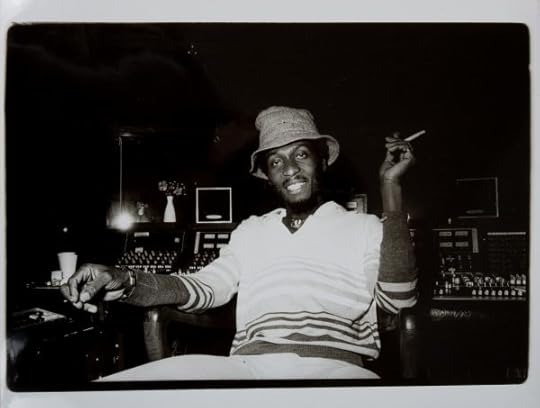
Photo by Michael Zagaris
That being said, I usually have in my mind what I want. If I were shooting in here today and I had never been in here and it was one of those things where, “you’re going to have a half an hour, 45 minutes with somebody.” As I walk in, I kind of take the room in and if you know who you’re going to be shooting, in your own mind, pretty much sorted out quickly what you think is gonna work. And it’s very subjective in the end, what we do. It’s basically our vision and it’s not unlike a visual diary. You’re doing it for you and then you’re sharing it with other people.
Becoming What You Shoot
I’ve always considered myself more in the vein of photojournalism. I like to capture, if not reality, things that appear to be real. I’ve always considered what I do in my approach to it, more like being an actor. Where you put on the clothes and it’s very Stanislavsky. You become what you shoot. That’s why I actually got into it. It’s allowed me to live out various movies as a character in the movie while documenting it at the same time. And it’s always given me cache and entree to situations where you’d never get into unless you were doing this.
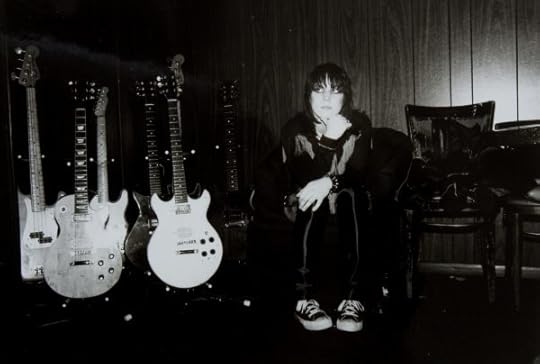
Photo by Michael Zagaris print
I’ve always wanted not only to experience what I’m shooting myself, but bring people that are viewing my work behind the scenes. Whether it be in music, politics, street scenes, sports, and give them the vision of the very people that I’m shooting. And I wanted to bring people behind the scenes and show them things that they’ve never seen.
Connecting
I could sit here and tell you how I do it, except I don’t know. I’ve always just kind of flowed with it and it’s just like dancing or anything else. You’re there, you’re talking or you’re not talking and you’re moving and you’re capturing it. And it’s never been with me much of a thought process. That’s actually been maddening to some people. They’ll say, “oh, how did you plan this?” Or “what was your f-stop” I know these things, but that’s never been important.
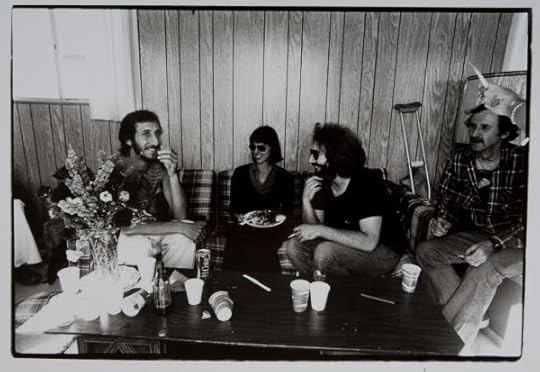
Photo by Michael Zagaris print
It’s all about the flow with me and I’ve tried to, whatever I do, hopefully really connect with my subject or environment and who I’m shooting with. Sometimes it’s easy. It’s about being a person that pays attention. I mean viscerally in your soul and try to read where you are and who you are and how you fit in, in relation to your subjects. Sometimes it means almost being invisible. Other times it means really relating to an individual or groups of individuals.
Steps in a Shoot
It depends on what kind of shot. If I’m going to do a cover, where we’re going to go in a studio and do something, I might start a couple of weeks ahead of time by thinking, “okay, I’m going to do so and so for this magazine cover. What do I want to do? How do I see them?” And I’ve got stacks of magazines that go back to the late 60’s, early 70’s. And they’re not just photo magazines. Most of the things I draw on are things like Italian Vogue, English Vogue, French Vogue. A lot of European magazines and books. I might take a couple of days just going through and getting idea. And then, if I’m going to shoot you, for instance, you and I talk about it.
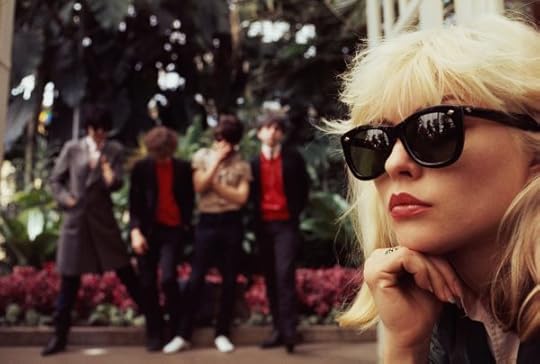
Photo by Michael Zagaris
And I’ll say, “We could do this, this, this, this, and how do you feel about it?” Then I usually tell them, “You know what? This isn’t about me taking just your picture. I want more than that. Let’s, let’s do something that in 40 or 50 years, you can look back on and go, this is incredible. This is dynamite.” I want you to act or to be either who you are or who you think you are or who you’d like to be. But you have to put it out there. And I don’t care if there’s 80 people here. There’s just you and me and that’s hard. But you let’s try to do that.
Capturing Real Moments
Most of the things I shoot, I shoot because I want to explore more. I want to be there. I want to become that moment or be with these people. If for instance, shooting baseball. For me, it’s no different than a player. From the moment I walked through the doors of the clubhouse in my mind, I’m a player. I’m a major league ball player and I’m preparing for the game. People know, it’s like you’re part of the team and they not only don’t give you any shit, they don’t mug for the cameras. And you’ve become, if not invisible, part of their teammates. That allows you to capture them as they really are. More of like a reality TV, without the non-reality. And it allows me to approach it as if I’m getting ready for the game.
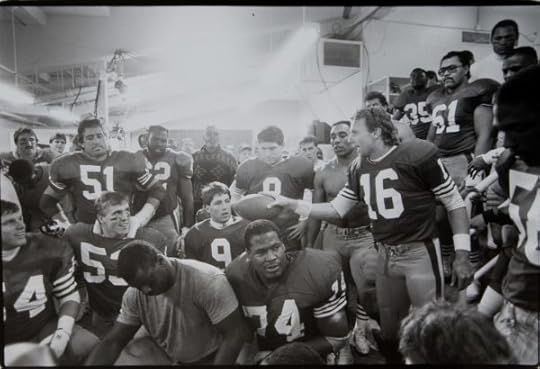
Photo by Michael Zagaris
With the Rolling Stones, I remember in ’72, before they’d go on stage, they had a makeup artist. Depending on who it was, whether Mick had a lot more rouge, then there’s eye shadow, and Egypt coal. Then I’d sit down and I’d get some on, because I figure if you’re going to capture the experience, I want to be what I’m shooting. Now there are some people that’ll tell you that’s bs. You’ve got to be objective and you know what? I’m not going to say they’re wrong. That’s how they approach it. If and that’s their vision of it, go for it. But for me, I’ve got to really be involved.
Advice for Photographers
Just remain engaged and always be open. Try to see and feel everything and just capture it. I think the most important thing is to shoot what really moves you and shoot what you feel. Whether you’re doing it just for pleasure as an amateur or whether you’re doing it for a job. Something that really resonates in you and moves you. Because chances are if it moves you, it’s going to move some other people too.
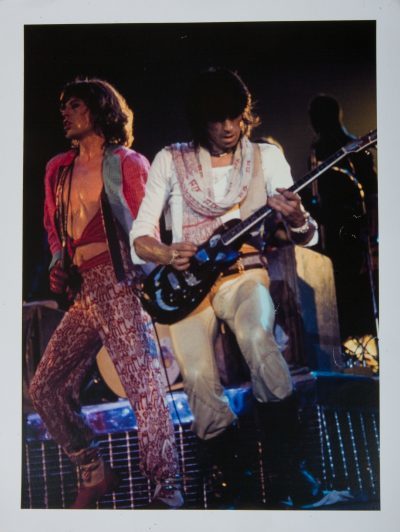
Photo by Michael Zagaris
Thanks for joining again. I hope you enjoyed hearing from the Z-man about shooting rock or anything and will put it to use for yourself. Be sure to subscribe to our YouTube channel and follow the blog to keep up with all of our content. And please share like, and leave your comments. We love hearing from you. And remember to get out and capture your own images of life.
The post How Rolling Stones Photographer Michael Zagaris Captures Real Moments appeared first on Advancing Your Photography.


